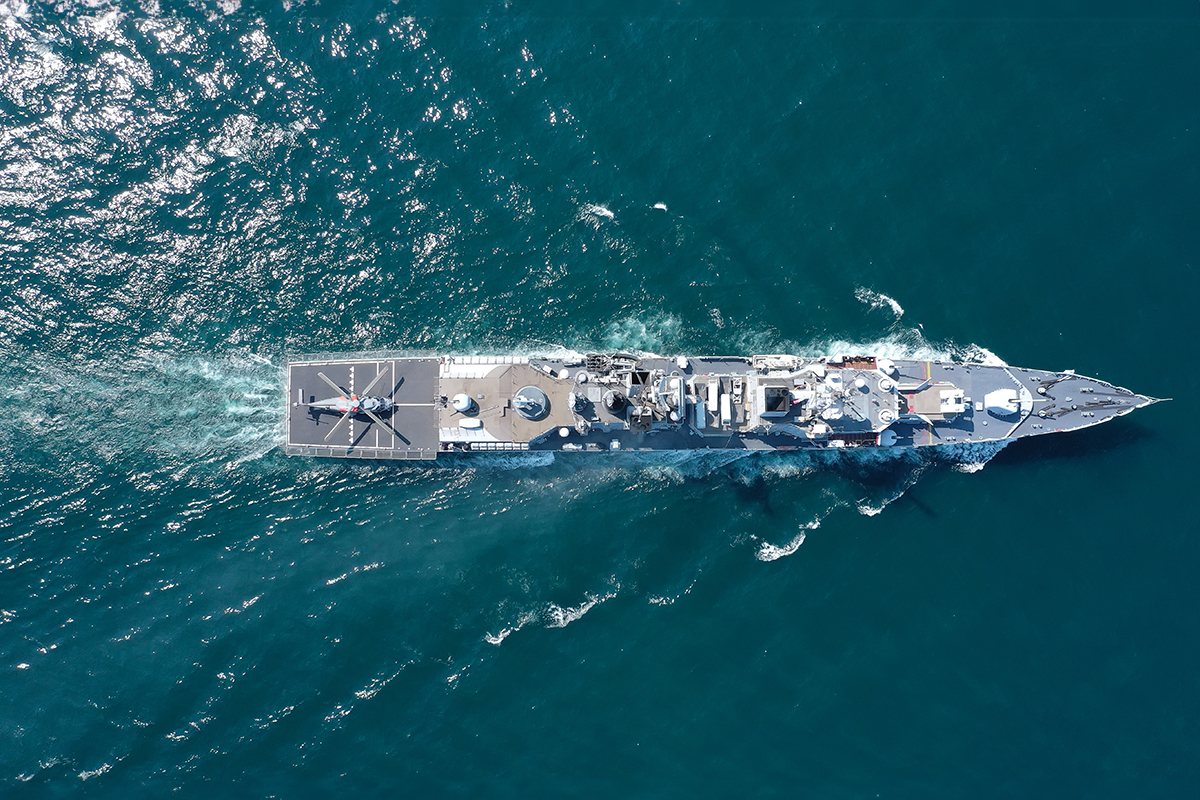In a strategic move to fortify its defense capabilities against the evolving landscape of modern warfare, the United States Navy is preparing to roll out its latest innovation: Project METEOR. This groundbreaking initiative involves the installation of a high-powered microwave weapon aboard a naval vessel, slated for completion by 2026.
Project METEOR represents a monumental advancement in the domain of directed energy systems, a class of weapons engineered to neutralize targets without the reliance on conventional ammunition. At its essence, METEOR leverages the potency of intense electromagnetic energy to disrupt the electronics of adversarial drones, presenting a swift and economical countermeasure against these increasingly prevalent threats.
The significance of METEOR extends beyond its singular function. Engineered with a low cost-per-shot, extensive magazine capacity, and strategically significant range, this weapon system ensures a versatile and adaptable defense mechanism for naval operations. Furthermore, its capacity to engage multiple targets simultaneously, coupled with dual deception and defeat capabilities, underscores its efficacy in combat scenarios.
The genesis of microwave weaponry such as METEOR lies in response to the proliferation of low-cost drones in modern conflicts. As evidenced by recent events in regions like the Russia-Ukraine conflict, Gaza, and the Red Sea crisis, unmanned aerial vehicles have emerged as potent instruments for asymmetrical warfare, posing formidable challenges to conventional military forces.
Of particular concern is the potential threat posed by drone swarms, wherein numerous drones could coordinate attacks with unprecedented precision and efficiency. This scenario underscores the urgent requirement for innovative defense solutions capable of thwarting these evolving threats.
In addressing this imperative, the US Navy has turned to directed energy systems, recognizing their potential to deliver unparalleled speed and efficacy in neutralizing hostile drones. Unlike conventional weaponry, which often entails exorbitant costs and logistical challenges, microwave weapons offer a streamlined and cost-effective means of defense.
The fundamental principle underlying directed energy, as expounded by experts, lies in its remarkable speed. Travelling at the speed of light, electromagnetic radiation eclipses traditional hypersonic threats, providing a decisive advantage in the realm of modern warfare.
While the United States spearheads the development of advanced directed energy systems, other nations are not far behind. The United Kingdom, for example, has unveiled its own rendition of directed energy weaponry, known as the DragonFire system. This formidable arsenal features a formidable laser gun capable of targeting airborne threats with pinpoint accuracy, showcasing the global momentum behind this transformative technology.
As the threat landscape continues to evolve, driven by rapid technological advancements and geopolitical shifts, the imperative for robust defense capabilities becomes increasingly evident. Project METEOR underscores the US Navy’s dedication to innovation and adaptability in the face of emerging challenges, ensuring that it remains at the forefront of maritime security in an era marked by uncertainty and complexity.
In the years ahead, as directed energy systems like METEOR become more seamlessly integrated into naval operations, they are poised to redefine the dynamics of modern warfare, offering a potent deterrent against emerging threats and safeguarding the interests of nations worldwide.







